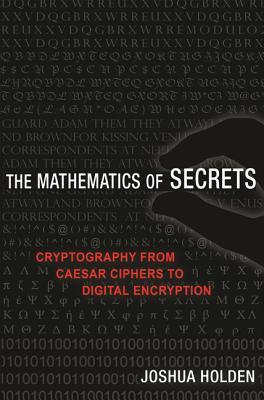Explaining the mathematics of cryptography
The Mathematics of Secrets takes readers on a fascinating tour of the mathematics behind cryptography-the science of sending secret messages. Using a wide range of historical anecdotes and real-world examples, Joshua Holden shows how mathematical principles underpin the ways that different codes and ciphers work. He focuses on both code making and code breaking and discusses most of the ancient and modern ciphers that are currently known. He begins by looking at substitution ciphers, and then discusses how to introduce flexibility and additional notation. Holden goes on to explore polyalphabetic substitution ciphers, transposition ciphers, connections between ciphers and computer encryption, stream ciphers, public-key ciphers, and ciphers involving exponentiation. He concludes by looking at the future of ciphers and where cryptography might be headed. The Mathematics of Secrets reveals the mathematics working stealthily in the science of coded messages. A blog describing new developments and historical discoveries in cryptography related to the material in this book is accessible at http: //press.princeton.edu/titles/10826.html.
Book
The Mathematics of Secrets: Cryptography from Caesar Ciphers to Digital Encryption
(Write a Review)
Paperback
$18.95
Explaining the mathematics of cryptography
The Mathematics of Secrets takes readers on a fascinating tour of the mathematics behind cryptography-the science of sending secret messages. Using a wide range of historical anecdotes and real-world examples, Joshua Holden shows how mathematical principles underpin the ways that different codes and ciphers work. He focuses on both code making and code breaking and discusses most of the ancient and modern ciphers that are currently known. He begins by looking at substitution ciphers, and then discusses how to introduce flexibility and additional notation. Holden goes on to explore polyalphabetic substitution ciphers, transposition ciphers, connections between ciphers and computer encryption, stream ciphers, public-key ciphers, and ciphers involving exponentiation. He concludes by looking at the future of ciphers and where cryptography might be headed. The Mathematics of Secrets reveals the mathematics working stealthily in the science of coded messages. A blog describing new developments and historical discoveries in cryptography related to the material in this book is accessible at http: //press.princeton.edu/titles/10826.html.Paperback
$18.95